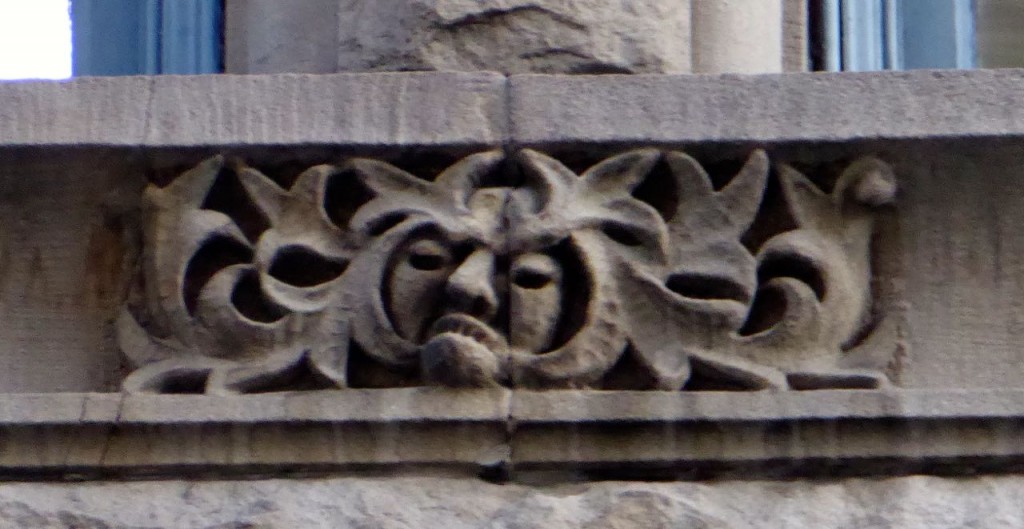I did a little walk around downtown Seattle yesterday. Here’s a few of the faces I saw. The first three were carved in Tenino Sandstone. The rest are terra cotta.







They are arguably the most famous heads in Seattle but unlike many others they say nothing. They only stare out wide-eyed in all of their tusked glory. They are, of course, the 27 terra cotta walrus heads on the Arctic Building at Third Avenue and Cherry Street. Designed by Augustus Warren Guild and opened in 1917, the building was originally the home of the Arctic Club, a Seattle-based social club.

The walruses have a storied history. Originally made by the Denny-Renton Clay & Coal Company, the heads consisted of three parts, two tusks and a head, all made from terra cotta. The tusks were held in place by steel rods and a sulfur-based bonding agent. Some have claimed that the original tusks were ivory or marble but this is wrong. There is also a rumor that one of the tusks fell out during Seattle’s 1949 earthquake. I have not been able to find any evidence that this happened but all of the tusks were supposedly removed following the quake.
Finally, in 1982, the walruses got a little dental work with the installation of brand new tusks. They were made of molded urethane. Since they didn’t have the originals they had to create entirely new ones. One person involved in the project told me “We didn’t have any images so I went to the library to find photographs.” They were made by Architectural Reproductions, Inc., now Architectural Castings.

Embedded in each tusk was a threaded stainless steel rod, which extended about 3 inches beyond the tooth and was then inserted into the head into grout, or what I like to call snout grout. Within a year or two, cracks in the head appeared. They were repaired with epoxy and the repaired heads repainted.
More cracks appear in the 1990s. A study in 1996 by Wiss, Janney, Elstner Associates, Inc. (WJE) determined that the snout grout was responsible for the cracking. Apparently moisture had entered the heads and reacted with gypsum, which had then expanded in the confined space, as if the walruses had really bad head colds. This led to the replacement of 13 heads. Because no one in the area could make new heads out of terra cotta, the new ones came from Boston Valley Terra Cotta, in Orchard Park, NY. The other 14 were repaired. All of them contain the tusks made in 1982.

Before leaving the heads behind I want to make a somewhat off subject foray. According to that great font of word wisdom, the OED, the walrus was previously known as the morse. In addition, the word walrus has a challenging etymology, which was worked out by none other then J.R.R. Tolkien. I think that’s sort of cool, though the OED doesn’t offer up any information on what seems to be could be the plural of walrus, or walrusi. After all we have cactus and cacti. Why can’t we have walrus and walrusi? I am waiting to hear from my more Latin-knowledgeable pals.